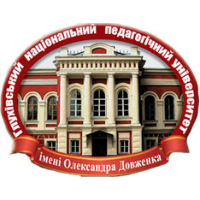 English
English Русский
Русский Українська
Українська
Languages
RILOV R. O. Changes in Byzantium tradition of chronicles after Latin conquest
Byzantium tradition of chronicles the end XIIth – middle of XIIIth century is considered in this article, on example of the works of George Akropolites and Niketas Choniates. The changes, which reflect political and ideological outlook of authors and influence of Latin Conquest, have been analyzed here.
History was a kind а genre of art in the times of antiquity and the Middle Ages. Chronicles have often demonstrated changes in imagination and the historical memory of nobility or nation. The beginning of the XIIIth century became a painful experience for the Byzantine Greeks, but further events showed that the crisis gave birth to development that help strength to the restoration of a complete statehood. Byzantium and Western Europe met in a crushing war to create a new political, economic and cultural space. The power centers were moved from the capital to places. A similar situation occurred with the development of art, science and culture in general. The proximity of the two worlds (Romanesque and Latin) was not friendly, but these cultural spaces inevitably influenced each other. The Western world became acquainted with the achievements of the Byzantine culture and the surviving works of ancient authors. At the same time, there was the influence on the culture of the Romans from the West side. Byzantium truly felt the Church's schism in 1054 exactly in the year 1204. The style of writing literary works changed under the influence of the West.
We will consider changes in writing the chronicles by comparing the two authors of Nicetas Choniates and George Akropolites. The first wrote his "Chronicle" before Latin conquest, but completed it after the fall of Constantinople in 1204, which he witnessed himself. Acropolis was a statesman and was in service in the Nicene Empire at John III, Theodore II and Michael VIII Palaeologus. His work without a title (in historiography called "History") serves as the most complete source for the history of Byzantium in 1204–1261.
Example of the Nicetas Choniates‟ work we can observe a relatively frequent appeal to the biblical tradition and to the ancient literature and mythology. The political representations of the authors of the chronicles differed significantly. It is no secret that the person according to the Basilean state's laws and under conditions of subordination of the authority of the spiritual secular, were given certain sacred meanings. The Romans (Byzantium Greeks) in the minds of lords and neighbors were not ethnos, but rather subjects of the empire. These were the Romans. For foreigners, this could have been a religious sign, when they were divided into "Armenians" and "Romans" according to their beliefs. This and a number other things illustrated the main role of old Byzantium tradition in the Nicetas Choniates' work.
After the Latin conquest the state, in which the chronist lived, has been perceived differently. George Akropolites perceives neighbors almost equal to the Romanian state, as potential allies or enemies. If earlier (in XIIth century) it was an abstract definition of the citizenship of the empire, or denominational affiliation, then, after the Fourth Crusade, the borders of the Greek states in the space of the former Byzantine Empire began to coincide largely with ethnic borders. George Akropolites in his work appeals to emotional human stories in order to entertain the reader more often than references to the Bible.
Key words: historiography, historiographer, chronicle, ancient literature, style, empire, Nikita Honiat, Georgiyi Akropolit
- 238 reads





